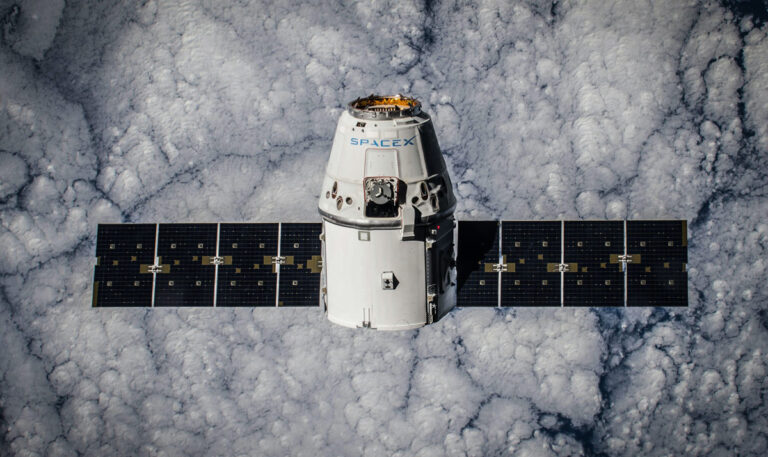SpaceX is launching its first ever advertising billboard into orbit
Billboards have been gobbling up city horizons forever. With brands increasingly running out of physical spaces, many have switched to virtual billboards with in-game advertising. But what if they could just be shuttled into the next best ‘real estate’ instead? Following astronauts and billionaires to space is now advertising—that can soon be purchased with cryptocurrencies including Dogecoin.
Teaming up with Geometric Energy Corporation (GEC), a Canadian research and development firm, SpaceX is building a satellite called the CubeSat—a small modularised orbiter used for space research. One side of the satellite will feature a pixelated screen where advertisements, logos and art will be displayed.
The CubeSat will hitch a ride aboard SpaceX’s Falcon 9 rocket, which will release it into orbit before reaching the moon. Once in orbit, a selfie-stick attached to the side of the CubeSat will film the entire display screen. This footage will then be livestreamed on YouTube or Twitch so that anyone back home can tune in to watch the satellite’s screen. The CubeSat is currently slated for an early 2022 release.
“Anyone can advertise on the CubeSat”
If you are someone who wants to advertise on the satellite, you will have to buy tokens to claim, locate and design a pixel on its display screen. There are five tokens in total to choose from: Beta for the X coordinate, Rhoe for the Y coordinate, Gamma for the brightness, Kappa for the colour and XI for the amount of time. With the Beta and Rhoe tokens, you can decide where to place your pixel. The Gamma and Kappa tokens allow you to control what your pixel will look like, while the XI token will determine how long it will last for.
In an interview with Business Insider, Samuel Reid, CEO and co-founder of GEC, explained how businesses, advertisers, artists, and “anyone else who is interested” will be able to put their illustrations on the CubeSat’s display screen.
“There might be companies which want to depict their logo…or it might end up being a bit more personal and artistic,” Reid said. “Maybe Coca-Cola and Pepsi will fight over their logo and reclaim over each other.” Reid imagines the CubeSat display screen to look similar to artboards such as Reddit Place and Satoshi’s Place. Think of a Bitmoji Paint canvas, but up in the sky.
The CEO also mentioned how people will be able to buy the tokens with cryptocurrencies such as Ethereum. In the future, the Canadian startup also plans on introducing Dogecoin payments. Although Reid couldn’t reveal how much each token or CubeSat would cost, he added how the company is trying to achieve something “that can democratise access to space and allow for decentralised participation.”
“Hopefully, people don’t waste money on something inappropriate, insulting or offensive,” he added. Hate to break it to you Mister Reid, but this is the internet-influenced age of humanity that we’re talking about. The same that once drew a dick-pic in the Suez Canal and wrote erotic fanfiction immediately after.
Talking about the internet, folks over on Twitter seem less than impressed with the ‘ground-breaking venture’. “Not even the stars and galaxies we all gaze at will be safe from the dark maw of capitalism,” wrote a user. “Life is not-so-slowly turning into an episode of Futurama,” fumed another. The move has instead been labelled an “abomination” on the platform, “brought to you by SpaceX and the childhood interests of its billionaire leader.”
SpaceX: We're going to try to make our satellites darker so they don't interfere with star gazers.
— Scott Leffler 🎙️ (@scottleffler) August 9, 2021
Also @SpaceX?: Space Billboards!!!https://t.co/XjMDXGmmlb
This isn’t the first joint venture between SpaceX and GEC. In May 2021, GEC paid SpaceX (entirely in dogecoin) to secure a spot for its satellite aboard an upcoming lunar mission. “In short: dogecoin is literally going to the moon,” Gizmondo noted. The mission, called Doge-1, is also scheduled to take off in early 2022.
With this latest venture, SpaceX is undoubtedly targeting the final frontier advertising has to offer. So even if you plan on becoming “a supervillain who destroys space billboards specifically,” the next step in our march towards cyberpunk dystopia is already underway. After all, what’s space tourism without billboards to enrich the view?





